The San Francisco Forest Alliance has published an excellent article about the pointless and harmful attempt to eradicate oxalis in San Francisco’s so-called “natural areas.” We are grateful to SFFA for their outstanding research and permission to republish the article.
The oxalis season is over, and the perky yellow flowers have vanished for another year. These Bermuda buttercups will be back next year to herald the spring, bringing joy to those who love them, irritation to those who hate them, and Tier I herbicides targeted at them in San Francisco’s so-called “Natural” Areas.
THOSE WHO HATE OXALIS AND WANT TO POISON IT WITH GARLON
These flowers are so visible in spring that Bay Nature magazine did an article about them in March 2015: A Natural History of the Little Yellow Flower that’s Everywhere Right Now. It quoted Jake Sigg, the retired SF Recreation and Parks gardener who is considered the doyen of San Francisco’s native plant movement. He hates oxalis pes caprae, which he considers extremely invasive. The article quotes him as saying that, without intervention, “in X many years Twin Peaks would just be one solid mass of yellow, and there wouldn’t be any other plants there…” The article suggested that an oxalis-dominated landscape “drives away coyotes, hawks and owls that feed on grassland foragers, and the situation is especially dire for endangered Mission blue butterflies, which depend heavily on native wildflowers.” Most of those ‘facts’ about oxalis are mistaken as we’ll explain below.
Mr Sigg’s theories align with those of the Natural Areas Program (NAP) of the San Francisco Recreation and Parks Department (SFRPD), which uses the herbicide, Garlon (triclopyr) to battle oxalis despite its dubious efficacy for the purpose. San Francisco’s Department of the Environment classifies Garlon 4 Ultra as Tier I: Most Hazardous. It’s listed as HIGH PRIORITY TO FIND AN ALTERNATIVE (their caps). Since oxalis is the main reason NAP uses Garlon, the alternative we propose is – don’t use Garlon or anything else on oxalis.
An article on SaveSutro.com, based on a detailed study by the Marin Municipal Water Department, describes some of the issues with Garlon:
- Garlon “causes severe birth defects in rats at relatively low levels of exposure.” Baby rats were born with brains outside their skulls, or no eyelids. Exposed adult female rats also had more failed pregnancies.
- Rat and dog studies showed damage to the kidneys, the liver, and the blood.
- About 1-2% of Garlon falling on human skin is absorbed within a day. For rodents, it is absorbed twelve times as fast. It’s unclear what happens to predators such as hawks that eat the affected rodents.
- Dogs may be particularly vulnerable; their kidneys may not be able to handle Garlon as well as rats or humans. Dow Chemical objected when the Environmental Protection Agency noted decreased red-dye excretion as an adverse effect, so now it’s just listed as an “effect.”
- It very probably alters soil biology. “Garlon 4 can inhibit growth in the mycorrhizal fungi…” (soil funguses that help plant nutrition)
- It’s particularly dangerous to aquatic creatures: fish (particularly salmon); invertebrates; and aquatic plants.
- Garlon can persist in dead vegetation for up to two years.

First, a little about the actual natural history of oxalis. This plant doesn’t set seed in California, and spreads entirely by sending out roots and forming little bulbils (like tiny potatoes) underground. It’s usually found where the soil has been disturbed by activities such as road-building, gardening, or trail-building. In some cases, the disturbance comes from landslides or something similar. It can’t stand frost. If we do nothing, it would tend to die down rather than spreading uncontrollably.
In disturbed landscapes, it can spread fast. For this reason it can be a nuisance in gardens. People don’t want to leave their gardens alone for years to let nature take its course with the oxalis, and not every garden design includes brilliant yellow as the dominant color for a few weeks. The only way to eradicate it in the short term is to dig it out carefully every time you see it, and make sure you get most of the bulbils. Or use strong herbicides, which may not work.
In a natural landscape, though, it’s a different story and here’s why.
1) OXALIS IS GOOD FOR BEES AND BUTTERFLIES

Oxalis is actually an excellent plant for bees and butterflies. When blooming, it provides “copious nectar.” In fact, it generously gives away its nectar. Since it doesn’t set seed, it doesn’t benefit from pollinators – but it’s a food source for honey bees, bumblebees and butterflies. (You can read a rather technical description of the plant HERE in a 2-page PDF note from UCLA’s Barry A. Prigge and Arthur C. Gibson.)
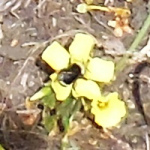
In fact, a recent 2014 study shows that plant communities with exotic plants had more plant species as well as more pollinators, that pollinators didn’t prefer native plants, and that even some specialist pollinators depended on introduced plant species.
It’s true the Mission Blue butterfly needs (native) lupine as its nursery plant. (It doesn’t depend on any other native wildflowers – only three varieties of lupine. Incidentally, one of the key nectar sources for the Mission Blue butterfly is an invasive non-native Italian thistle: Carduus pycnocephalus).
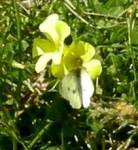
Lupine has been planted on Twin Peaks as NAP attempts to reintroduce the Mission Blue butterfly there. But lupine is also a plant of disturbed areas, which means that NAP must maintain it or it will die out as the area stabilizes. They have to keep planting it, weeding, and trimming the grass around the lupine patches to make it attractive to the butterfly. An SFRPD report on the reintroduction project said “unmanaged habitat deteriorates quickly.” Presumably, they don’t use Garlon near the lupine patches, since it would likely kill that too. Despite what is implied in the Bay Nature article, it’s not oxalis that’s the issue. The real problem is another native plant, the coyote bush which takes over grasslands in a natural succession.
2) OXALIS IS GOOD FOR WILDLIFE
Oxalis bulbils are a food source for wildlife. Gophers and other rodents eat them. In fact, the Bay Nature article says, “Their spread is abetted by pocket gophers and scrub jays, which have been spotted carrying the bulbs and caching them in the ground—effectively planting them in new areas.”
Since gophers are a foundation species in the food web, being dinner for predators from hawks to coyotes to great blue herons, these plants actually provide habitat benefits whether or not they’re flowering, because the bulbils are there all year.
Where there are gophers, the predators follow. Like the coyotes in these pictures, which clearly haven’t been driven away by a landscape dominated by oxalis.
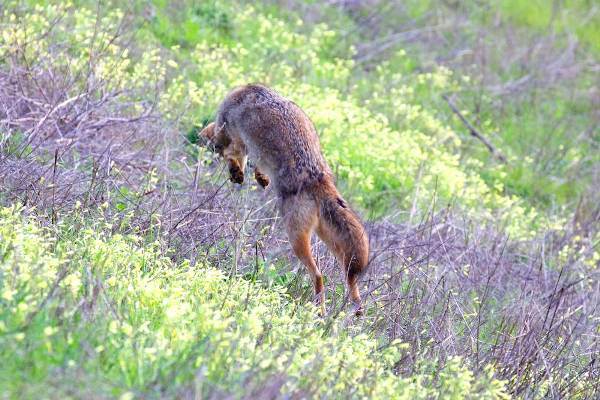
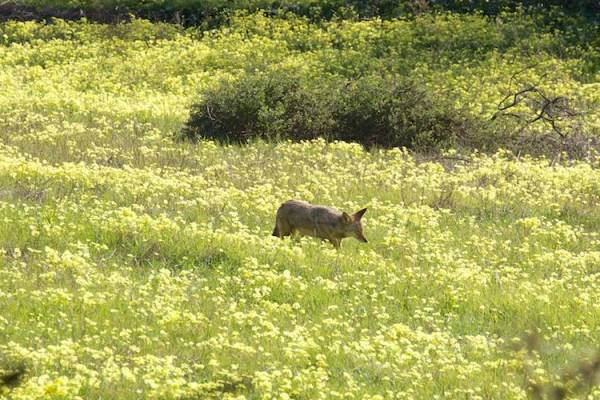
3) OXALIS DOESN’T LEAVE THE GROUND BARE
The article says that oxalis leaves “bare ground during the six months of the year oxalis doesn’t flower.” That’s not true either.
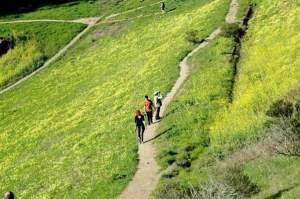 The spectacular yellow bloom of the oxalis – valuable because the mass of color attracts honey bees and bumblebees – gives the impression that it’s the only plant there. But though it visually takes over the landscape when it’s in bloom, it naturally grows interspersed with grasses and other plants. Like in the picture above.
The spectacular yellow bloom of the oxalis – valuable because the mass of color attracts honey bees and bumblebees – gives the impression that it’s the only plant there. But though it visually takes over the landscape when it’s in bloom, it naturally grows interspersed with grasses and other plants. Like in the picture above.
In fact, oxalis tends to enrich the soil with phosphorus, which is good for grass.
So when it finishes blooming, as it has by now – you don’t get bare ground. The picture below shows the same area as the first picture in this article – but it’s after the oxalis bloom is over. It’s grassland.
4) OXALIS HAS LITTLE IMPACT ON “NATIVE” PLANTS
One argument – related to the ‘bare ground’ argument – is that oxalis takes over grasslands and destroys them, particularly the native grasses. However, grasslands in most of California including San Francisco are dominated by non-native grasses. The change occurred over 100 years ago, when these grasses were planted for pasture. So the grassland that NAP is defending with herbicides is primarily non-native anyway.
But anyway, what’s the evidence that oxalis is actually damaging native plants?
It’s true some European studies do suggest that an increase in oxalis is associated with a decrease in native plants diversity –though whether it’s a cause is unclear. It may just be benefiting from human activities that disrupt the landscape. Another study put oxalis head-to-head with a native annual grass, lolium rigidum. The native grass tended to dominate. Their conclusion: “Oxalis is a poor competitor. This is consistent with the preferential distribution of Oxalis in disturbed areas such as ruderal habitats, and might explain its low influence on the cover of native species in invaded sites.”
The California Invasive Plant Council rates its invasiveness as “moderate,” considering it as somewhat invasive in sand dunes and less so in coastal bluff areas.
In San Francisco, every place where oxalis grows is already a disturbed environment, a mix of non-native grasses and plants with native plants (some of which have been artificially planted). Here, oxalis appears to grow happily with other plants – including, for instance, the native California poppy in the picture above.
5) KIDS LOVE IT AND IT’S EDIBLE
Children love oxalis, both for its pretty flower and for the sour taste of its edible stems.
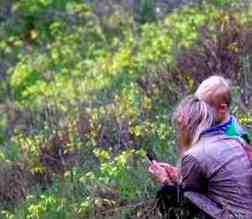 Even small children love gathering posies of Bermuda buttercups (though picking flowers is technically prohibited in Natural Areas). The flowers are surprisingly hardy for wildflowers, and in a glass of water last quite well as cut-flowers.
Even small children love gathering posies of Bermuda buttercups (though picking flowers is technically prohibited in Natural Areas). The flowers are surprisingly hardy for wildflowers, and in a glass of water last quite well as cut-flowers.
The plant is edible, and its tart leaves make a nice addition to salad. People enjoy snacking on its sour stems. Besides Bermuda buttercup, it’s also called ‘sourgrass’ and ‘soursob.’ It does contain oxalic acid (as does spinach, for instance), and so you probably wouldn’t want to make a meal of it. Though in South Africa it’s made into soup.
Adding Garlon to it is probably a bad thing.
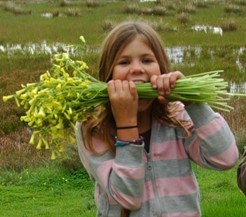
CONCLUSION
From our current evidence, there’s no sign that oxalis has a negative impact on wildlife, and plenty of evidence it’s already part of the ecological food web of our city. The evidence also suggests it’s not having a negative effect on other plants in San Francisco either. Lots of people find this flower attractive; one writer described it as the city smiling with Bermuda buttercups.
In any case, even Doug Johnson of the California Invasive Plant Council doesn’t think it’s worth attacking at a landscape level: the payoff isn’t worth the expense. Removing it from the hundreds of acres in Natural Areas isn’t as simple as eradicating it from a small yard where it’s clashing with the garden design. It requires a lot of work, a lot of powerful herbicides, a multi-year effort – and for what?
The justification for using strong pesticides like Garlon to control it is weak. We call on NAP to stop using Tier I and Tier II herbicides altogether.
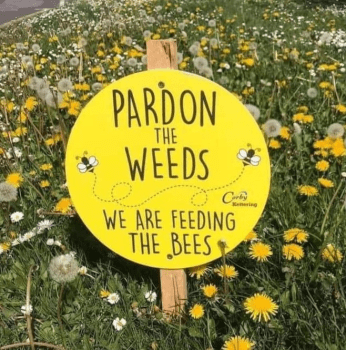
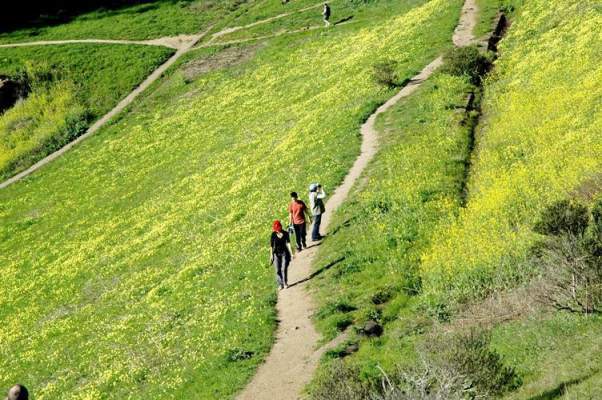

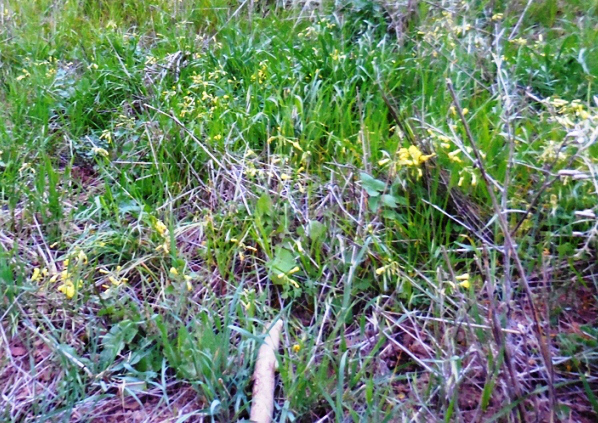
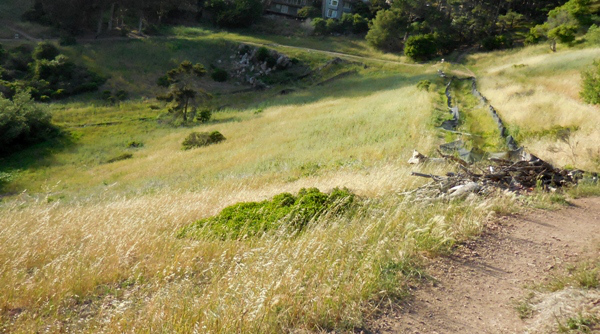
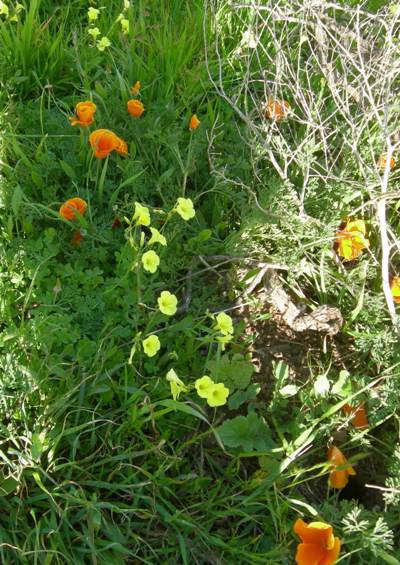
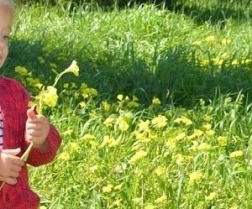
OMG, when will it end in your area, when the land lays bare waiting for a lone native plant to return? I agree, the oxalis is beautiful and makes a stunning meadow display. The coyote looks so happy in the meadow, I cannot image all the wildlife – bees especially – that will eventually perish from this spraying. Coupled with lack of rain, plants in CA may be a thing of the past. I guess the native folks know that even native plants will not survive without water.
I believe it will end when the government no longer makes money available to those who are employed to do this damage…and not a moment before.
I am sorry to say that “native folks” do not seem to realize that native plants will not survive without water. Our most vocal and visible nativist (Jake Sigg) has been raving for a year (in his Nature News, in letters to policy makers, in public comments at hearings, etc.) about how the drought is killing all the eucalyptus in San Francisco. He now says that within a year, all eucalypts in San Francisco will be dead and therefore must be destroyed NOW because when they die they will cause a huge wildfire that will KILL everyone. His readers seem to be lapping it up. It is absurd, of course. The eucalypts are thriving all over the world in climates that are much hotter and drier than San Francisco. One wonders how the drought could single out one species of tree to kill, but all native plants are exempt from any ill effects of the drought. The fact is, the drought puts stress on ALL plants and trees. How could it be otherwise?
Good reply. I think these native vocalists are doing far greater damage than good. I just can’t see why they think bare earth is better than eucalyptus. Do they not see the Monarchs using them????? Since it is your mist cover (fog) and unique climate in the area more than the tree itself, sure Monarchs would winter on a native tree, but what does that do in the meantime when Monarchs are gone? Are they waiting until the last of those too?
Ah yes, you give me another opportunity to report on the absurdities of the nativist agenda in the San Francisco Bay Area. Here’s how one of Jake Sigg’s allies responds to the question of where monarchs will over-winter if the eucalypts are destroyed. He says that since monarchs are not known to have over-wintered in San Francisco in the distant past, they should not over-winter there now. Somehow what happened in the distant past suggests to this self-styled butterfly expert that it would be harmful to monarchs to over-winter there now. He isn’t specific about what this harm might be. He just has an unsubstantiated belief that what happened in the distant past in San Francisco represents some ideal flora and fauna. (Here is a link to the article: https://baynature.org/articles/plant-milkweed-save-monarchs/ The issue is debated in the comments.)
You can’t make this stuff up. Aren’t they marvelously inventive? They are capable of fabricating the most bizarre scenarios in support of their ideology.
Thanks, Donna, for handing me these opportunities.
Figures, the old argument like it is applicable today. One last oak and and one last Monarch, OK that should be just right. Maybe he thinks importing Koalas would hasten the eucalyptus problem. We have been very good about bringing in the animals for control?????
Right….don’t look to the nativists for consistency. You won’t find it.
In my garden there s a few Oxalis and I do not want it or fror it to spread. I use a weed torch when the Oxalis is very young and is not forming bulbs..
So far it is not killed, but I think I am winning. At least it is non toxic. Jean
Thanks for the suggestion. I hadn’t heard of a weed torch.
They are available from Peaceful Valley organic supply in Grass Valley and AM Leonard tools. J
Definitely stay on top of your small patch of oxalis. After 30 years, our yard is covered in it and has killed our lawns. It was our fault as we didn’t pay attention to it’s “slow” spread!
I am a person that finds the arguments of Million Trees that the species immigrations that have previously been termed “invasions” to have emotional character similar to that of the arguments of the crowd they oppose – that is, that the arguments are NOT based solely on objective scientific arguments. I think Million Trees is missing a perspective very much like the missing perspective of those that have for decades claimed that logging, especially if followed by slash burning, mimics the beneficial effects of wildfire, and is in error for very similar reasons.
But this post is not for the purpose of deconstructing that argument. The purpose of the foregoing paragraph was to provide context for the following:
Using synthetic biocides, or indeed, even naturally-occuring biocides, in the manner (timing, volume, scale, intent, etc.) that are always proposed (and, indeed, would be required in order to achieve the stated reasons/objectives for using them) is a CRIMINAL approach to stewarding. If “nativists” wish to massage species profiles of ecosystems, the only logically (indeed, morally) defensible approach is to work WITH natural processes.
We silly humans think, because our brains interpret signals from our eyes in 3-D, that “structure” is the important thing. IT IS NOT. “Processes” (which are 4-D, give rise to structure) are far more important (and higher-order dimensions that give rise to processes are even more important, but asking humans to try to comprehend 4-D stuff is already asking a lot, so let’s stick with “processes” for now.)
MY emotional bias? I am evangelically-opposed to the use of biocides in any other manner than as emergency measures, and then only if they are used in VERY targeted, temporary manners whose purpose is to give some breathing room. If natural processes do not operate in that breathing room to produce the structures (species, configurations, etc.) that some particular humans are the most fond of, TOO FUCKING BAD — that it neither an excuse nor need for ubiquitous use of biocides..
Article in today’s NYTimes on how the Colombians have stopped spraying to eradicate coca due to concerns about the herbicides and cancer.
>
That makes the Colombians smarter than we are. According to the NY Times article, the American ambassador to Colombia published an op-ed in their paper, defending our poisoning agenda. We should be embarrassed. Is it any wonder that we are unpopular in Latin America?
I agree. The money involved in the pesticide/herbicide industry in the US is phenomenal and friends in other countries are horrified. The people in Viet Nam, still suffering from birth defects from US Agent Orange herbicide don’t forget. But the companies who poisoned that environment and people are just richer and looking for more victims. (For those still supporting the US invasion of such a small country who was no possible threat to the US, do know that they were just fighting for their freedom from the French and then the US.)
I love the edible shamrock relative, Oxalis, who is also related to our Redwood forest oxalis. This incredibly beautiful wildflower blooms for months in the darkest of winter, needing no help. I can’t think of another flower commonly seen in cities and wasteland that is as beautiful. It is no risk at all to truly natural areas, but only appears in urban areas. It shows up only where there are other exotic plants since it is in urban parks only. I have never seen it in any of the Bay Area wilderness parks that I hike, whether Marin, Alameda, Contra Costa, San Mateo counties, etc.
What is wrong with these people who are obsessed with hating and killing such a beautiful flower? They are usually trying to make room for other non-natives anyway. None of this makes real sense and is part of what seems to be the fanaticism of the nativist, which is causing the killing of thousands of beautiful health trees, and which will soon be more, destroying our beautiful East Bay hills wilderness parks.
The reference to the spread of Baccharis is interesting because it is so plain compared to the beautiful and evocative-scented but so hated Broom species who seems to share an ecological niche with Baccaris. Again, Broom is a bright yellow-flowered plant who survives in spite of no water and on ruined ground.
As every week I hear of another friend diagnosed with cancer, and so many others of us with chronic illness, which many believe are the result of pesticides/herbicides exposure against our will, how can anyone but Monsanto and Dow (and those getting kick-backs) justify further use of these poisons in our park and environment. They are not needed, ever. How many more people and animals are to be poisoned in this crazed mania to kill natural beauty?
Again, for those who then yell, “But it’s not native here!” please be the first of the non-natives to leave.
Cattle, sheep and goats will prevent succession to coyote brush and reduce the grass around lupine… and for the most part not eat lupine (it’s toxic). They won’t harm the oxalis either, it’s not preferred and grows back fine.
The whole plant is edible, not just the leaves and stems! The flowers make a colorful addition to salads or any dish needing a sweet and tart garnish. The roots often have swellings which are a nice snack (and you don’t have to feel bad killing it since it’s so abundant).
Eating too much Oxalis can cause kidney damage from the oxalic acid that is present in every part of the plant.
Wikipedia says that is not likely: “Various sources suggest that oxalis ingestion causes calcium oxalate kidney stones, but clinical experience and physiological considerations as described in the Wikipedia article on kidney stone make it unlikely that any realistic intake of Oxalis would affect human liability to kidney stones. Accordingly, some Australian references to the hazards of oxalis to livestock tend to be dismissive of this risk.”
In any case, oxalis sprayed with herbicide is even more toxic and hazardous to your health.
Yes! While digging on my hillside and coming apon MANY oxalis bulbs, my dog ate a few and became ill, not too bad, but bad diarrhea. I definitely have to keep the dogs from finding more!